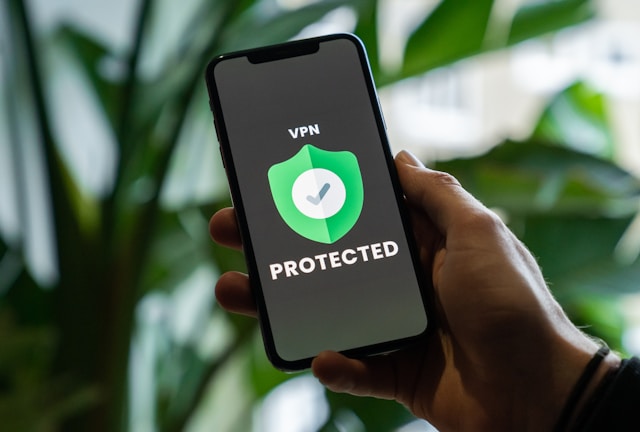Is your business in need of more sales from local customers? Then, you’ll benefit from geolocation targeting, which can be a game-changer for your business. With the right strategies, you can dominate the local market and scale your operation to the next level.
In this article, we’ll share the top ideas you can implement today to find your target audience in any location. This includes geographical locations that are small and big. For example, you can set the perimeter you want to target with geofencing marketing.
Keep reading for ideas on how you can implement geolocation targeting in your business today.

Table of Contents
Geolocation Targeting: What Is It?
Geolocation targeting is a digital marketing strategy that uses data on a user’s physical location. This is used to deliver personalized content, ads, or services relevant to their location. Furthermore, by identifying user locations, brands can target audiences based on proximity to specific places. This might be a store, events, or other business locations.
This approach helps marketers provide timely and location-specific offers with the aim of improving engagement. That’s because the content should better align with local needs and preferences.
Additionally, geolocation targeting is popular in retail, hospitality, and travel industries. That’s where it enhances user experiences and drives foot traffic, online conversions, and stronger brand loyalty.

How To Target Ads to a Geolocation
Now, let’s focus on the process of using targeted ads toward specific locations. There are a number of strategies and technologies at play here. When combined correctly, you can enjoy highly profitable marketing campaigns.
1. Use GPS and Mobile Location Data
Mobile devices offer precise location data via GPS, which enables marketers to target users based on their real-time or recent locations. You’ll need to work with mobile ad networks or location-based platforms for best results. Hence, you can create campaigns that display to users within specific geographical areas.
This is perfect for immediate and relevant offers like discounts or promotions. Additionally, with consent-based data collection, brands ensure privacy compliance while leveraging GPS data. It’s a good idea to familiarize yourself with GDPR location data laws, so you avoid legal trouble.
2. Leverage IP Address Targeting
IP address targeting identifies a user’s general location by their internet connection’s IP address. This allows ads to be served based on city, region, or country. The method is useful for businesses targeting a broad area or audience within specific regions. Location-based marketing is all about focusing on the areas where you can find your customers.
However, it’s less precise than GPS but remains effective for desktop and mobile advertising where exact location details aren’t critical. Additionally, IP targeting enables brand localization by delivering relevant messages to users based on their regional context. This enhances the brand’s relevance and appeal.
3. Utilize Geofencing
Geofencing creates virtual boundaries around specific locations like a store or event venue. Then, you can serve ads to mobile users entering or exiting these areas. This technique is precise and perfect for time-sensitive promotions or events. For example, a retailer can set up geofences around their locations to attract nearby shoppers with exclusive deals.
Furthermore, by integrating geofencing with push notifications or mobile ads, brands can engage customers at optimal moments. It’s vital to select a geofencing platform that provides excellent features. This ensures you can trust the tools to find the customers you need.
4. Leverage Local Keywords
Incorporating local keywords in search advertising allows brands to target users who are searching for products in a geographic location. Therefore, by mentioning cities or neighborhoods, advertisers can capture search traffic from users seeking nearby options.
For example, Google Ads let marketers adjust bids for searches from specific locations. This maximizes the reach in high-priority areas. The approach helps businesses compete effectively in local markets. Also, smaller businesses will appreciate the lower cost of ads for more obscure geophagic areas.
5. Apply Beacons for Proximity Marketing
Beacons are small devices installed in physical locations that communicate with nearby smartphones via Bluetooth. This allows for hyper-targeted advertising to engage users precisely when they’re close to specific areas within a store or venue.
Overall, beacons are especially effective for in-store promotions or personalized experiences. For instance, recommending products based on user preferences. Shoppers can receive immediate and relevant offers as they browse.
This enhances the in-store experience and encourages purchases. Additionally, proximity targeting with beacons allows for gathering insights into customer behavior. You can leverage this data to improve future marketing efforts.

How To Choose the Right Geolocation Targeting Platform
Choosing the right platform is vital whether you’re selling local products or executing a geolocation affiliate marketing campaign. In this section, we’ll share the noteworthy factors you must consider when choosing the right platform. Here are the top points to consider:
- Assess platform analytics and reporting: Analytics reveal how well geolocation campaigns perform, which helps refine strategies over time. Therefore, look for platforms with robust reporting that offer insights into metrics like engagement, click-through rates, and conversion tracking.
- Review privacy and compliance standards: Privacy is crucial in geolocation targeting because it involves user data. Hence, choose platforms that prioritize data privacy and comply with regulations from governing bodies. Also, look for transparent data usage policies.
- Evaluate location precision: Different platforms offer varying levels of location accuracy, ranging from general regions to specific store zones. If your campaign requires high precision, choose platforms with GPS or beacon support.
- Consider integration capabilities: Ensure the geolocation platform integrates smoothly with your existing systems, like CRM or ad platforms. Overall, seamless integration allows for cohesive campaign management, thereby unifying user data for a consistent experience.

Challenges To Consider With Geolocation Targeting
Geolocation targeting offers significant advantages but comes with challenges that businesses must navigate.
First, privacy concerns are paramount, as geolocation involves sensitive data. Hence, companies need to ensure compliance with regulations. This involves obtaining user consent and providing opt-out options. Failure to prioritize privacy can harm a brand’s reputation and lead to legal issues.
Another challenge is accuracy. While GPS and beacon data provide precision, factors like weak signals, network issues, or limited coverage areas can affect location accuracy. Ineffective targeting can hurt the bottom line since you’ll end up sending messages to the wrong target audience.
Integration complexity is also an issue. For instance, businesses may struggle to align geolocation platforms with their existing systems. This is true when combining with CRM or analytics tools for unified tracking.
Finally, businesses need to address content relevance. For geolocation targeting to succeed, messaging must be highly relevant to a user’s location, preferences, and context. However, generic content could lead to disengagement. It means companies must constantly update and optimize their location-based campaigns with this in mind.

Execute Geolocation Targeting With GeoPlugin
The best practices in this article will help you get the most out of your geomarketing campaign. In fact, you can beat local competitors and significantly increase the market share. Also, as technology advances, you must keep up with the latest trends. This ensures you don’t get left behind by other businesses that move quickly.
Your geolocation targeting success will also depend on the platforms and tools you choose. Ideally, you will find those with excellent customer support, user interface, and pricing. Also, don’t forget about the quality of the geolocation accuracy.
Are you unsure of what tool can help you target local customers? Then, consider adding GeoPlugin to one of your preferred tools. It allows you to convert IP addresses into geolocation data easily. Use this data to target only the customers that might have an interest in your business.
So what are you waiting for? Give GeoPlugin a try today, and don’t look back.

Frequently Asked Questions
Let’s focus on the FAQ that can help clear up basic ideas about geolocation marketing.
Why is geolocation targeting important for businesses?
Geolocation targeting allows businesses to reach customers based on their physical location, thereby making marketing efforts more relevant and timely. Hence, you can increase your marketing ROI and give your customers a better experience.
Geolocation targeting is particularly valuable for businesses aiming to build brand loyalty and attract nearby customers. That’s because contextually relevant offers work better than generic marketing.
How accurate is geolocation targeting?
The accuracy of geolocation targeting depends on the technology used. GPS and beacons provide the highest precision, often within a few meters. This makes them ideal for hyper-local promotions.
However, IP-based targeting offers broader accuracy. That’s usually at the city or region-level. Selecting the right method depends on campaign goals, since each level of accuracy fits different types of targeted outreach.
What are the common uses of geolocation targeting?
Businesses widely use geolocation targeting to engage local audiences with specific offers. This is great for boosting in-store visits and promoting nearby events. Retailers can also attract customers with location-based deals, while event organizers can reach nearby attendees.
The strategy also benefits industries like hospitality, real estate, and travel. This is where customer proximity enhances the relevance and impact of the marketing message.












